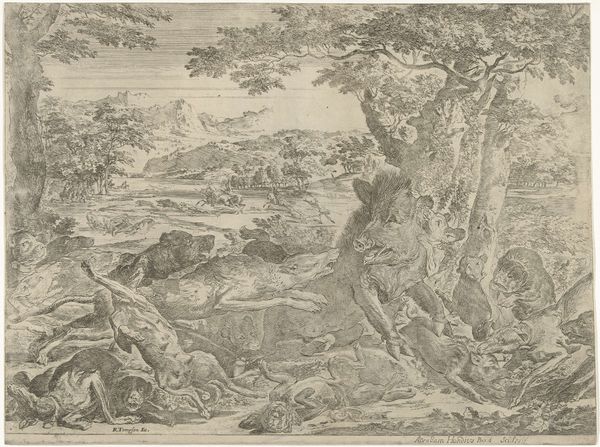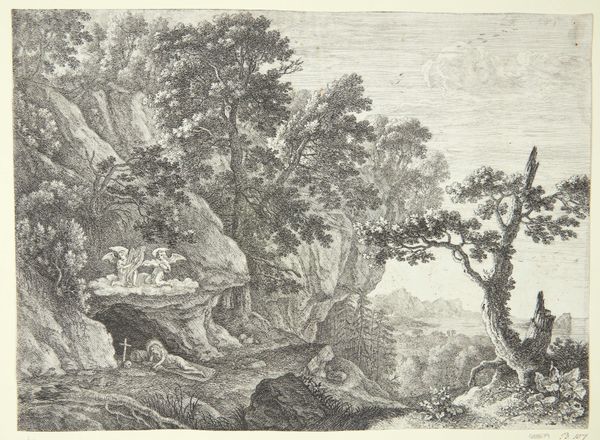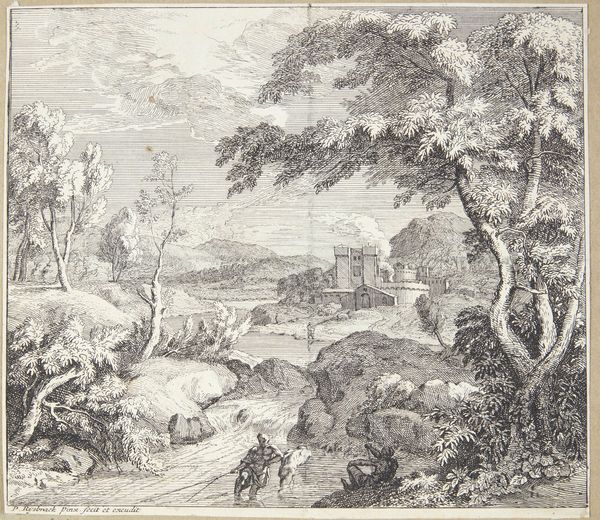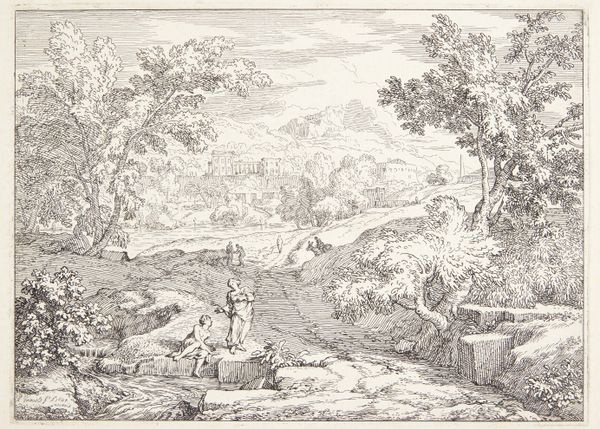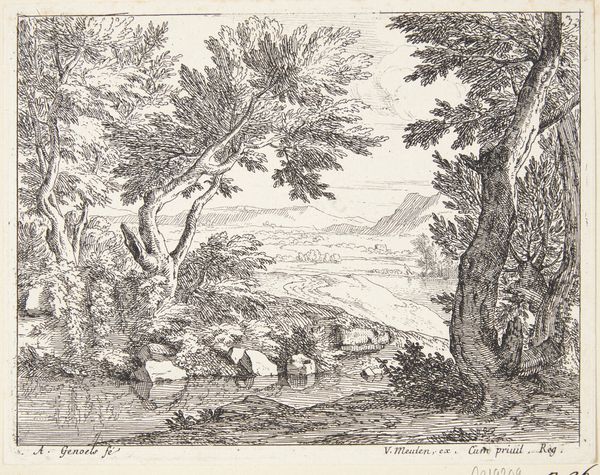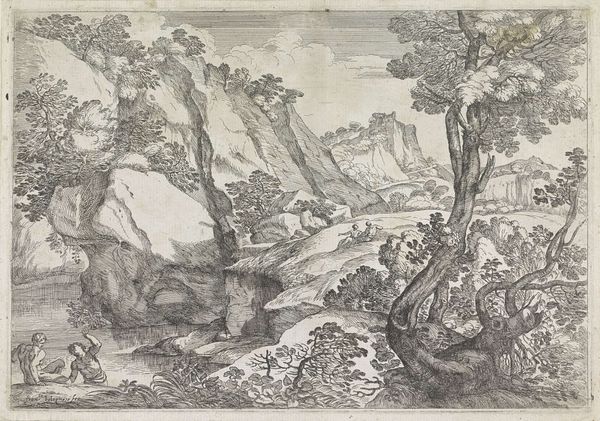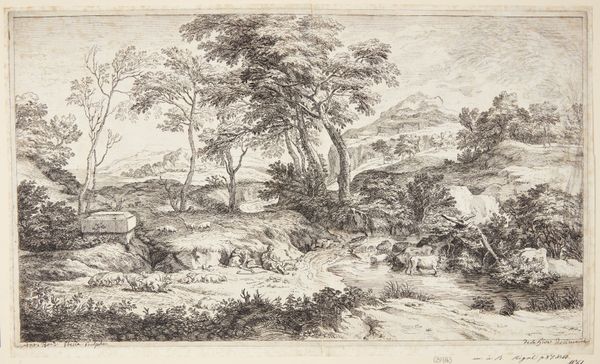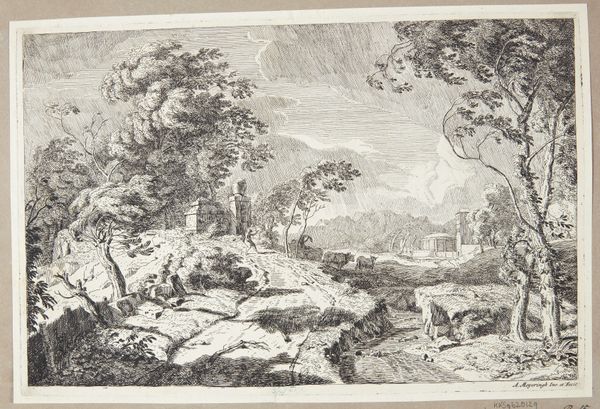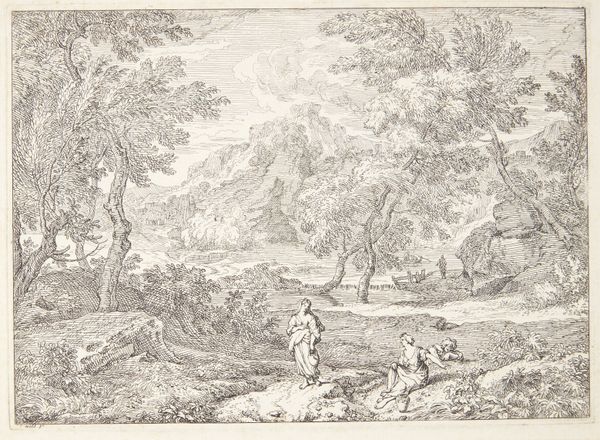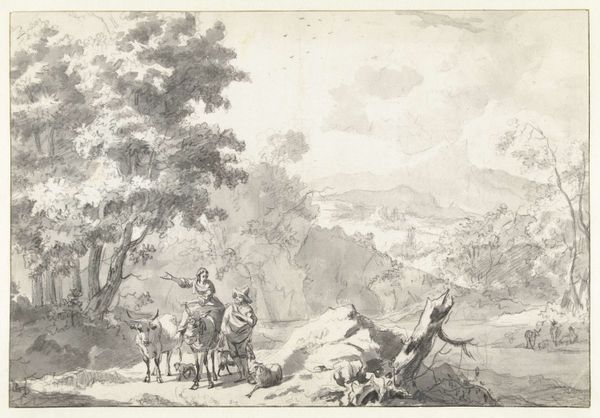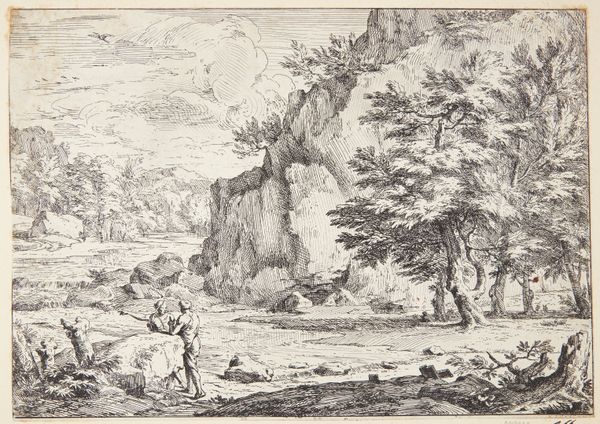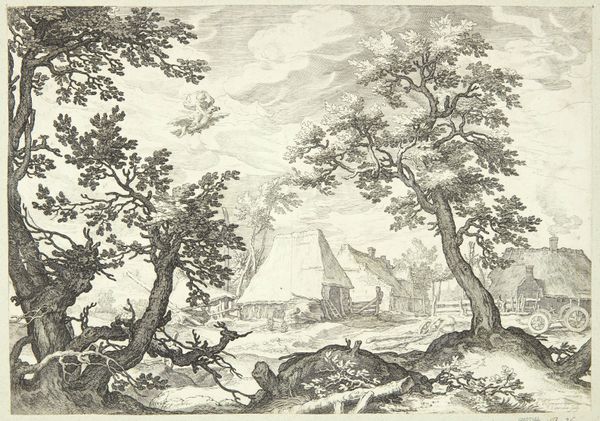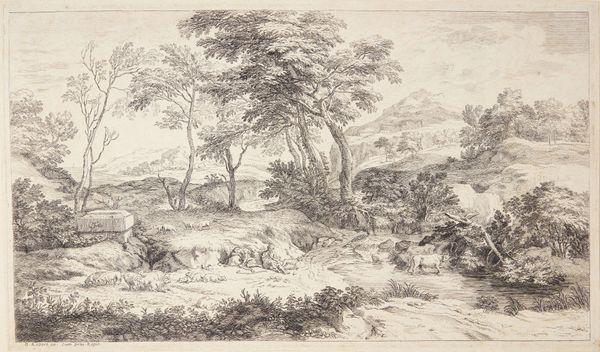
drawing, print, etching, paper
#
drawing
#
baroque
# print
#
etching
#
landscape
#
etching
#
figuration
#
paper
Dimensions: 177 mm (height) x 272 mm (width) (bladmaal)
Curator: What strikes me first is the level of detail achieved through etching in Abraham Genoels' "Arcadian Landscape with a River" from 1675. It's a delicate dance between light and shadow, creating a scene that feels both inviting and slightly melancholic. Editor: The light, monochromatic landscape and idyllic imagery evoke an interesting narrative for sure. There's a tension inherent in representing Arcadia. While ostensibly a utopia, what colonial fantasies might the scene uphold through its evocation of classical pastoral ideals and what impact does this idealization of land have upon indigenous populations? Curator: A point well taken. The title itself signals the artist’s attempt to conjure Arcadia, an idealized vision of unspoiled wilderness, but as you suggest, devoid of true representation of real lived experiences, it remains a purely symbolic space. Notice how the etching technique allows Genoels to capture textures - the roughness of the rocks, the softness of the foliage. These aren't just generic trees; they are symbols of abundance, deeply rooted in cultural memory. Editor: Absolutely, but let’s remember how such idealized landscapes often serve as justification for territorial expansion. I can't help but read these scenes through the lens of displacement. The three seemingly casual, nearly nude, figures seem disconnected. What does it mean that the figures represented appear disconnected from the landscape even though they inhabit it, reinforcing dominant narratives of access and control of resources for certain bodies but not for others? Curator: Interesting. We might then consider the placement of the figures within the overall composition. The figures are quite literally marginal within the overall scene. But consider the rock they inhabit along the riverside as an anchor that grounds this scene. Water, itself, carries heavy symbolic weight representing transformation and purification, but also as the means to further colonization through routes of maritime access and enslavement. Editor: Yes, those nuances within broader, intersecting, historic contexts become incredibly important in the reading of such idyllic visual rhetoric, disrupting our contemporary consumption of bucolic fantasies and calling for further questioning of utopian visual constructs. Curator: Looking closely at the artwork pushes us to think critically about these layers. There's always so much more to landscapes. Editor: Indeed, it really allows for an engagement with the weight of symbols that we continue to reckon with.
Comments
No comments
Be the first to comment and join the conversation on the ultimate creative platform.
